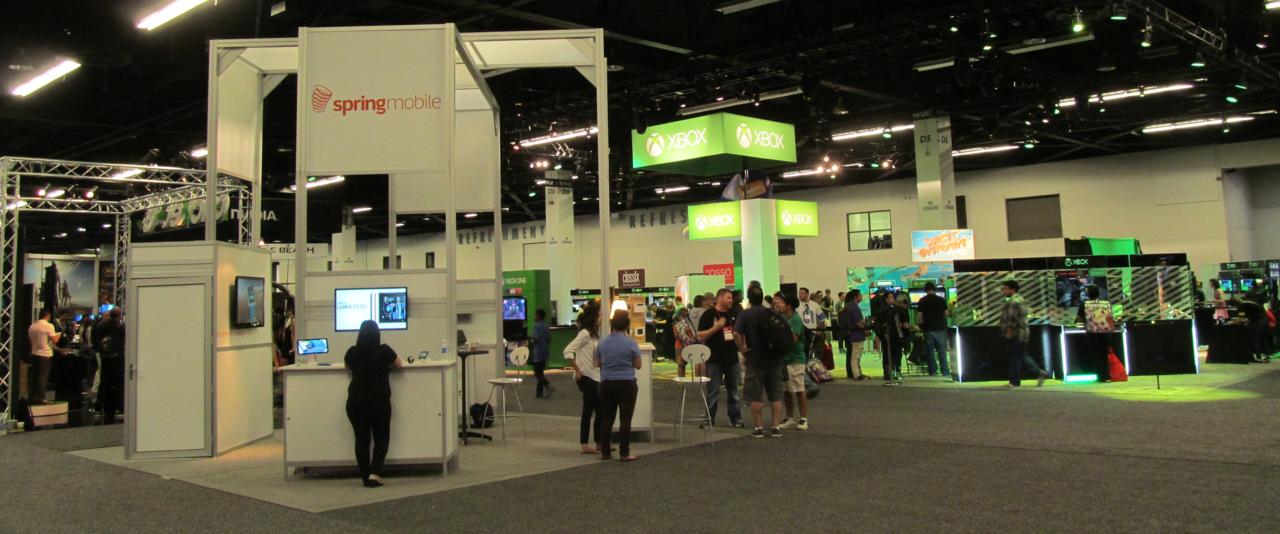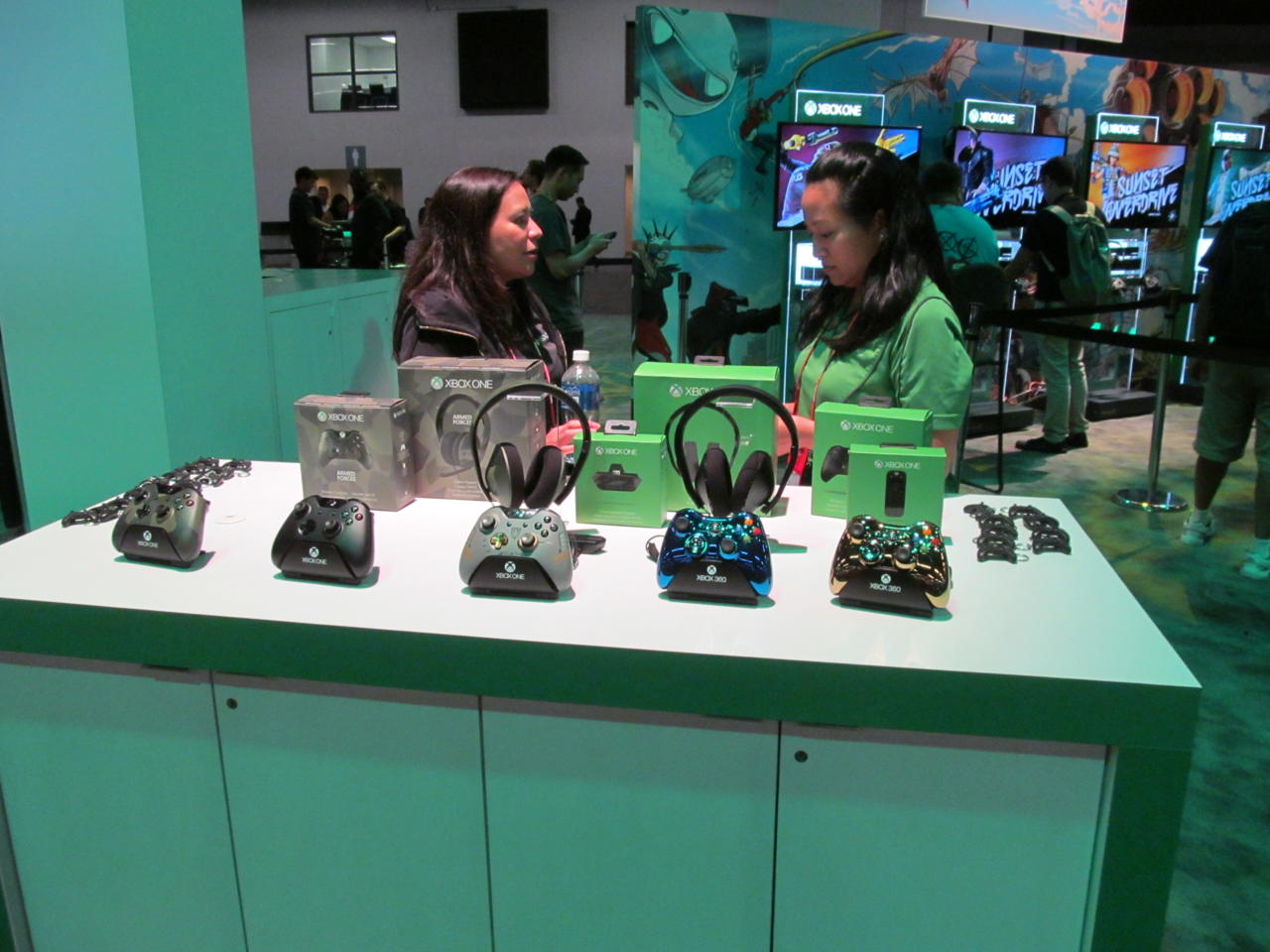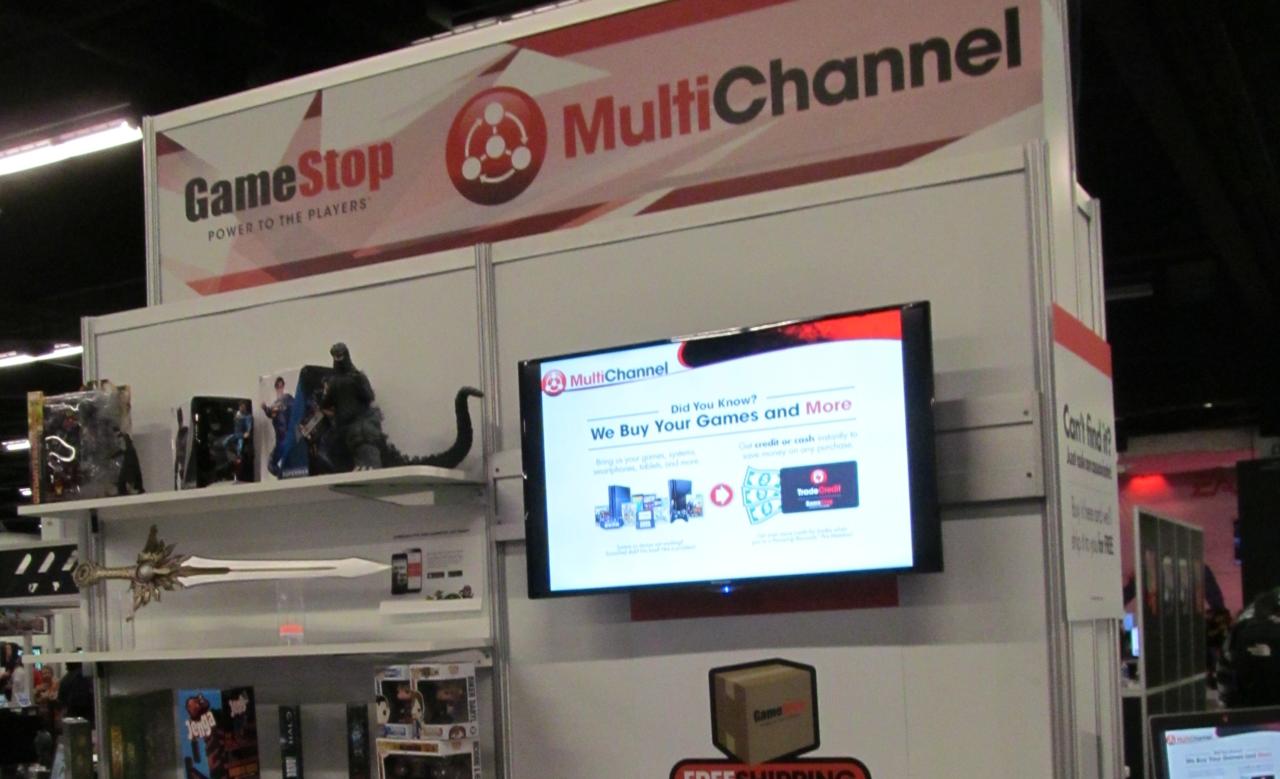GameStop's Still Around, Still Growing, And Still a Retail Force
Where do you buy your games?

If I mentioned major industry events from this September, the first thing that would spring to your mind would undoubtedly be the Tokyo Game Show. But there was another event held earlier this month that you probably didn't hear as much about: the GameStop Expo, held at the Anaheim Convention Center. It wasn't the hotbed of new announcements and reveals that TGS was--the biggest announcements from GameStop were a credit card and some exclusive 3DS XL variants--but that's not really the show's main thrust. The GameStop Expo is a show all about the massive specialty games retailer and their relationships across the industry--with their managers and employees, with publishers and manufacturers, and with you, the consumer.
ADAPT AND THRIVE
It might be easy from an individual perspective to dismiss GameStop as a retail dinosaur, especially as things like digital distribution pick up steam (pun not intended). But that view defies the hard numbers: The chain moved over three billion dollars' worth of product in the last fiscal year via its thousands of retail stores throughout the United States. This figure includes not just new and used games and consoles, but various related collectibles and services. The company's PowerUp Rewards membership program has enlisted 35 million consumers, of which 28 million are located in the US. Even though some players have gone completely digital in their game purchases, it's clear that GameStop's boxed product business is still going strong.
To this end, the company has also pursued aggressive expansion, going into the markets of mobile gaming devices running Android and iOS. They also founded the GameStop Technology Institute in late March. Jeff Donaldson, Senior Vice President of the Institute, describes GTI as an "innovation incubator." "We want to make sure that the pace of change internal to GameStop exceeds the pace of change external to GameStop," says Donaldson.
"Our stores should morph to meet the needs of the customer when they walk in, just like a digital platform or an e-commerce platform." Jeff Donaldson
Some things are definitely changing for the storied retailer. Earlier in the year, the company announced plans to shutter about 120 GameStop stores (link via Gamesindustry.biz) while opening new Spring Mobile and SimplyMac locations. The company is also developing new technology to engage consumers while they are shopping. "Our stores should morph to meet the needs of the customer when they walk in, just like a digital platform or an e-commerce platform," explains Donaldson.
He elaborated that technology has advanced to a point where a physical shopping experience can mimic elements of e-commerce. One example he showed me was a "beacon," a low-power-consumption device that connects to a customer's mobile device. If a customer has Bluetooth turned on and they've opted in to GameStop's advertising program, when they pass by one of these beacons, they'll receive promotional offers and information tailored to their interests based on their history shopping at GameStop stores and visiting GameStop.com. Many of these technologies are currently being tested at select retail locations--one specifically named was the Austin, Texas College Station Mall store--and GameStop hopes to roll these beacons out to more stores in 2015.

But not every new technology venture GameStop has tried in the past has panned out. Among the casualties of GameStop's refocusing was Spawn Labs, which GameStop acquired in 2011 to develop game streaming technology. The plug was pulled on said development earlier this year. I had the opportunity to ask Bob Puzon, the VP of marketing and sales, about the company's cancelled game streaming service. "The gaming consumer has not yet demonstrated that it is ready to adopt this type of service to the level that a sustainable business can be created around it," he explained. "[Instead] we will focus our energy on selling existing services, such as PlayStation Now, through our retail channels."
"We're not afraid of failure," adds Donaldson. "There's things that fail, things that just don't work, things customers don't like. If it doesn't work, we throw it out."
GETTING PERSONAL
GameStop's sheer retail omnipresence makes them a powerful force for publishers and manufacturers looking to push product--and for the first day of GameStop Expo, which was open only to GameStop staff and press, that's exactly what they did. Every major publisher--and several smaller ones--had set up booths showcasing their upcoming titles, and GameStop employees could personally engage company representatives and developers. The purpose here was clear: the publishers wanted to create awareness and hype among GameStop staffers, who would then proceed to promote the games they felt deserved a bit of a push to inquisitive customers. This sort of word-of-mouth marketing has a lot of power in a specialty retail setting, where the buyer trusts the employees as experts on the products. (It especially benefits publishers without big marketing budgets--I witnessed a store manager talking with reps of a small publisher about the popularity of niche anime-styled games in their particular store.)
While the Expo opens to the public on the second day, it seems almost like a secondary concern. The event is still very much by and for GameStop and GameStop employees: almost every meeting room in the convention hall and the connected hotels were filled with managers, executives, and employees from various GameStop retail regions, gathered together for meetings and strategizing. It wasn't just the United States, either: I saw representatives from Canada, France, Germany, and Australia as well.
"When a new retailer enters the [used game] space we consider that a positive for our business." -- Bob Puzon
To that end, GameStop went to great lengths to promote itself at the show, having several large sales booths for games and collectibles and several displays highlighting GameStop programs and features. These served two benefits: Showcasing the various services like in-store purchases of digital game downloads GameStop offers to consumers, and letting employees know what initiatives and programs they are aiming to promote.
Among these were displays explaining and extolling the virtues of the company's massive refurbishment operations. The used game business is one of the biggest profit drivers for GameStop stores, and it's been a subject of much criticism from developers, publishers, and consumers alike. I didn't have a chance to ask any publishers at the Expo what they thought of this element of GameStop's business being flaunted at the show, but I didn't sense any overt tension about the subject. It seems that when you're as big a retailer as GameStop, companies will accept the presence of used games as long as they can still get new product on shelves.
Indeed, even though big box retailers like Best Buy and Wal-Mart have dabbled in selling used games, GameStop is still far and above the most dominant force in that market. "We've had others compete with us in the pre-owned game space many times," says Bob Puzon. "When a new retailer enters the space we consider that a positive for our business. We see a surge in trade awareness when anyone makes an announcement, so more people start thinking about trades. Yet what the competition doesn't have is our refurbishment center that millions of games go through every year to bring them back to new condition. Or the relationship we have with gamers." Puzon was also quick to point out that over 72% of the 1.2 billion dollars in trade credit went towards the purchase of new product.

WINTER IS COMING
As the all-important holiday season creeps up and GameStop begins to beef up its seasonal sales force, the efforts of publishers to gain the attention of individual managers and employees will potentially yield fruit. "Our store employees, our Game Advisors, they know our customers well, and they know the games. They know when the games launch, when DLC comes out, GameStop exclusives, you can get all of that info from them," says Donaldson. "Our role is to help make the consumer aware of these things during the purchasing process." Think of it this way: when you have a well-meaning-but-not-well-versed-in-gaming grandparent coming into GameStop looking to give thirteen-year-old Timmy his Christmas gift, these GameStop workers are the people who will help determine whether he winds up getting a new Wii U with Super Smash Bros. or an Xbox One with Forza Horizon 2.
The company's biggest consumers through and beyond the holidays, however, remain the core gaming crowd, and they're the people GameStop most wants to retain as loyal customers. Giving these consumers reason to acquire games and game content through the retail channel seems to be of the utmost importance for the company. "We're pursuing the creation of a physical brick-and-mortar store as a platform," says Donaldson. "We want to respond to customers the same way a digital or e-commerce platform would… they are highly engaged. We're introducing the idea of a brick-and-mortar store as part of digital engagement."
And even though GameStop is branching out, Puzon wants to reassure consumers that the company's core focus will always be games. "GameStop has gone through a transformation the last several years to continue to grow ... [but] video gaming is our heritage and our growth engine for the future."
Got a news tip or want to contact us directly? Email news@gamespot.com
Join the conversation